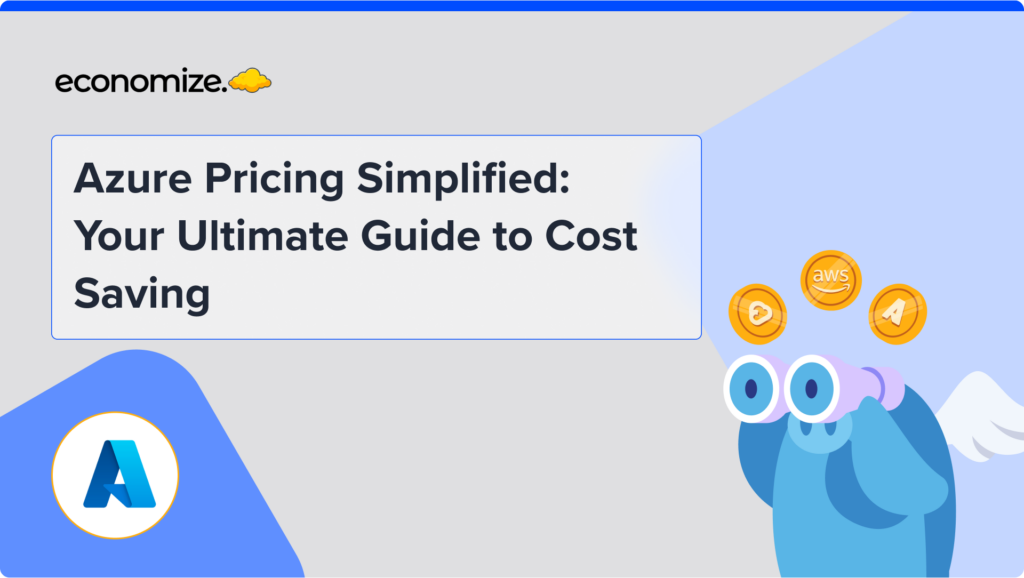Introduction to AWS Split Cost Allocation Data
AWS Split Cost Allocation Data is an essential feature designed to enhance cost visibility and management for Amazon EKS (Elastic Kubernetes Service) and Amazon ECS (Elastic Container Service). By incorporating this feature into the AWS Cost and Usage Reports (CUR), you can gain granular insights into your container costs, enabling you to analyze, optimize, and allocate expenses with precision. This functionality is particularly valuable for organizations utilizing Kubernetes applications, as it provides detailed pod-level cost data based on compute and memory utilization.
With the ability to aggregate these costs by cluster, namespace, and other Kubernetes primitives, you can accurately allocate costs to individual business units or teams. AWS Split Cost Allocation Data also helps you identify unused CPU or memory resources, presenting opportunities to optimize cluster configurations and minimize inefficiencies.
What is AWS Split Cost Allocation Data?
AWS Split Cost Allocation Data allows you to allocate application costs to individual business units and teams based on how Kubernetes applications consume shared EC2 CPU and memory resources. This is achieved by providing detailed cost visibility for Amazon EKS in the AWS CUR.

By tracking pod-level costs, you can understand the exact compute and memory utilization of your Kubernetes applications. This data can be aggregated by various Kubernetes primitives, such as cluster and namespace, enabling precise cost allocation.
Moreover, AWS Split Cost Allocation Data facilitates the identification of unused resources, which helps in optimizing cluster configurations. You can visualize these costs using the Containers Cost Allocation dashboard in Amazon QuickSight and query them using Amazon Athena via the CUR query library. By opting into this feature, your business can ensure that its cost management strategies are informed by accurate and granular data, leading to more effective budgeting and resource allocation.
How AWS Split Cost Allocation Data Works?
AWS Split Cost Allocation Data works by generating container-level costs based on the resource consumption of each container within an EC2 instance. It introduces new usage records and cost metric columns for each containerized resource ID, such as ECS tasks and Kubernetes pods, into AWS CUR. These costs are calculated based on the amortized cost of the EC2 instance and the percentage of CPU and memory resources consumed by each container. This approach ensures that costs are allocated precisely according to resource usage, providing a clear and detailed cost breakdown.
Estimating New Line Items in AWS CUR
When split cost allocation data is enabled, two new usage records are added for each ECS task and Kubernetes pod per hour to reflect their CPU and memory costs. This detailed tracking allows organizations to understand the exact cost contribution of each container, making it easier to allocate costs to the appropriate business units and teams.
To estimate the number of new line items that will be added to AWS CUR per day due to split cost allocation data, you can use the following formulas:
For ECS: (number of tasks * average task lifetime * 2) * 24
For EKS: (number of pods * average pod lifetime * 2) * 24
For instance, if you have 1,000 pods running each hour across a cluster of 10 EC2 instances and each pod has a lifetime of less than one hour, the calculation would be:
(1000 * 1 * 2) * 24 = 48,000 new usage records in AWS CUR
This estimation helps in understanding the potential increase in data volume and the granularity of cost tracking introduced by split cost allocation data.
How do you enable AWS Split Cost Allocation Data?
By following these steps, you can begin utilizing detailed cost data to optimize your resource allocation and manage your budget more effectively.:
- Sign in to the AWS Management Console and open the AWS Billing and Cost Management console.
- In the navigation pane, choose Cost Management preferences.
- Under General, in the Split cost allocation data section, choose between:
- Amazon Elastic Container Service (Amazon ECS) to opt into Amazon ECS only.
- Amazon Elastic Kubernetes Service (Amazon EKS) to opt into Amazon EKS only.

- For Amazon EKS, select between:
- Resource requests: Allocates your Amazon EC2 costs based on Kubernetes pod CPU and memory resources only.
- Amazon Managed Service for Prometheus: Allocates your Amazon EC2 costs based on the higher of Kubernetes pod CPU and memory resource requests and actual utilization.

It’s important to note that enabling split cost allocation data requires opting in through the Cost Management preferences and, for certain options, enabling all features in AWS Organizations.
How does AWS Split Cost Allocation Data Help Manage Your Container Costs?
AWS Split Cost Allocation Data enables precise cost management and optimization, ensuring that resources are used efficiently and costs are allocated appropriately. Utilizing this feature offers several significant benefits:
Granular Cost Visibility
AWS Split Cost Allocation Data provides a fine-grained breakdown of container costs, allowing you to track and analyze the expenses associated with each containerized workload. This granular visibility is crucial for understanding which applications or services are driving costs, identifying cost trends, and pinpointing areas where expenses can be reduced. By having detailed insights into the cost structure, you can make more informed decisions about resource allocation and optimization.
Accurate Cost Allocation
Accurate cost allocation is essential for fostering accountability and efficient budget management within an organization. AWS Split Cost Allocation Data allows you to allocate costs precisely to individual business units, departments, or teams based on their actual resource consumption. This level of accuracy ensures that each unit is only charged for the resources they use, promoting fair and transparent cost distribution. It also helps in tracking budget adherence and understanding the financial performance of different parts of the organization.
Better Cost Management
With granular cost insights provided by AWS Split Cost Allocation Data, organizations can implement more effective cost management and optimization strategies. By analyzing detailed cost data, you can identify inefficiencies, eliminate waste, and optimize resource usage. This leads to cost savings and more efficient use of AWS services. Additionally, the ability to monitor costs closely enables proactive management, allowing you to make adjustments before costs spiral out of control.
Integration with AWS Tools for Better Cost Visibility
AWS Split Cost Allocation Data integrates seamlessly with AWS tools like Amazon QuickSight and Amazon Athena, enhancing your ability to visualize and query cost data. Amazon QuickSight allows you to create interactive dashboards and reports, making it easier to analyze cost trends and patterns. Amazon Athena enables you to run SQL queries on your cost data stored in Amazon S3, providing a powerful and flexible way to explore and extract insights from your cost information. These tools help you gain a deeper understanding of your costs and make data-driven decisions.
Compliance and Reporting
Ensuring compliance with internal and external financial reporting requirements is a critical aspect of financial management. AWS Split Cost Allocation Data provides detailed and accurate cost data that can be used for audits and reviews. This transparency is vital for demonstrating compliance with financial regulations and standards. Detailed cost reporting also supports internal governance processes by providing the necessary data to verify that costs are allocated correctly and managed responsibly.
Conclusion
AWS Split Cost Allocation Data provides you with the tools necessary to achieve precise cost management and optimization for containerized workloads. By utilizing this feature, you can gain detailed cost insights, allocate expenses accurately, and identify opportunities to optimize resource utilization. By providing a detailed breakdown of costs associated with each containerized workload, AWS Split Cost Allocation Data enables organizations to enhance budget management, ensure accountability, and better manage your container costs across your organization.
How can we help
Are your cloud bills reaching sky-high levels? Don’t let cloud costs weigh you down anymore. With Economize, you can slash your cloud expenditures by up to 30% effortlessly. Book a free demo with us today and discover how we can help you start saving in as little as 10 minutes.








